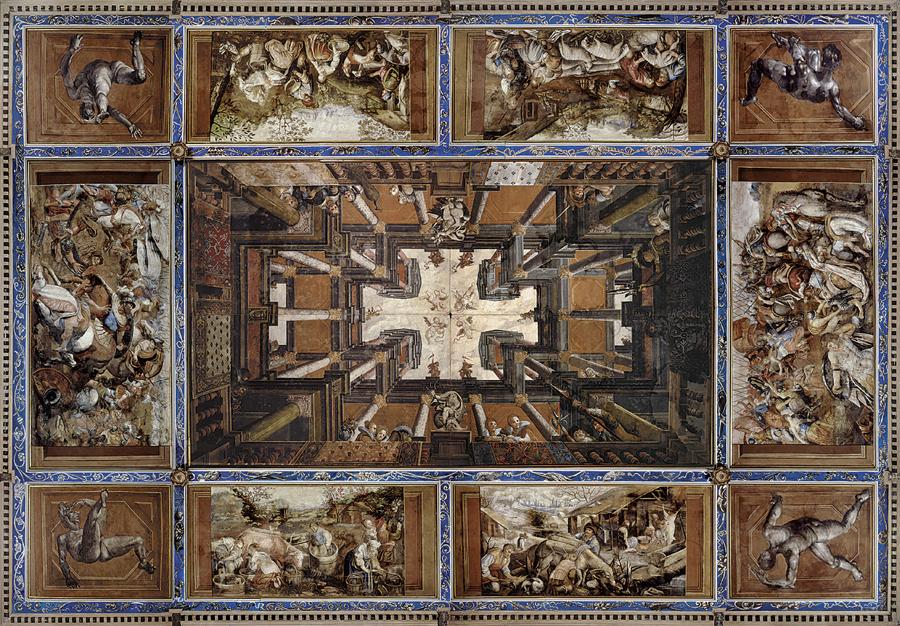
Celje, a town in Slovenia’s Štajerska (Styria) province, is known to most visitors for its old Austro-Hungarian architecture and its charming, provincial air. However, more and more people are discovering a hidden treasure in the heart of the city – a painting so unique it is known simply as the Celje Ceiling.
The work of art was discovered entirely by accident in 1926 during the renovation of the Old Counts’ Mansion in the heart of its Celje. When the workers removed layers of paint from the ceiling, they were greeted with a spectacular sight: A painting consisting of eleven canvasses separated by wooden panels, which had also been painted.
In addition to its size, another remarkable element of the painting soon became apparent: The artist’s use if trompe-l'œil, an optical illusion giving the ceiling a feeling of depth. Upon entering, visitors find themselves in an ancient forum, looking up towards the sky past columns and nobles gathered around the square.
Other parts of the Celje Ceiling feature various motifs, from allegorical portrayals of the four seasons to ancient gods, a battle between the Trojans and the Romans, as well as giants and carefree cherubs. The work is characteristic of the transition between the Renaissance and the Baroque and was likely painted in the early 17th century.
Remarkably, the creator of the Celje Ceiling remains an almost total mystery. Some experts argue that it must have been an Italian master, possibly someone who had spent time in Celje. Others point to the Northern European elements in the clothing and the architecture. According to them, the artist may have been a Northern or a Central European who was merely inspired by the Italian art of the era. Some even speculate that one of the faces in the painting is the artist’s self portrait.
What is known, however, is that the work was commissioned by the wealthy Thurn family, who owned the mansion at the time -- and that the painter liberally borrowed various elements from several famous painters of the era. In fact, only the central canvas, with its trompe-l'œil forum, is thought to be entirely original. Regardless of his identity, the artist was clearly a master of perspective and the ceiling remains one of the most remarkable works of art in Slovenia.
The Celje Ceiling, which has recently been illuminated, has even begun to attract visitors from neighboring countries. Some arrive in Celje just to see the remarkable masterpiece, which had remained hidden from public view for centuries.

































































